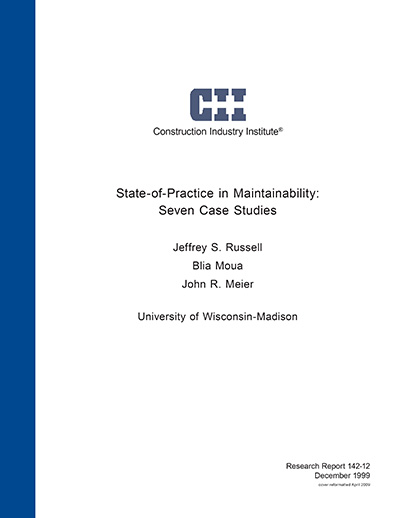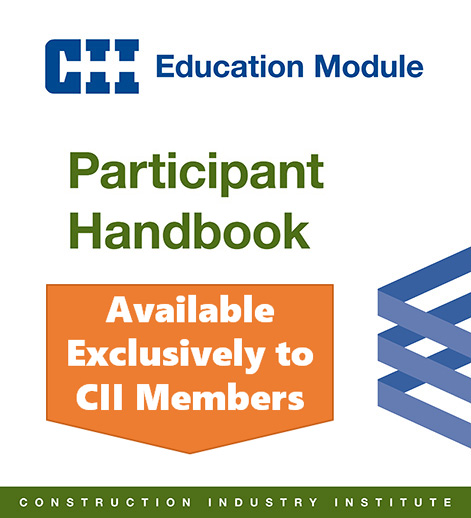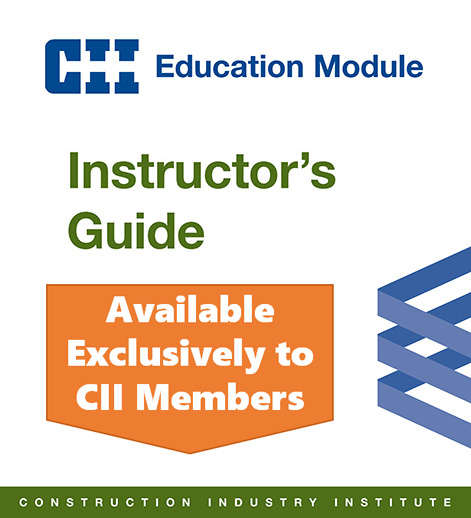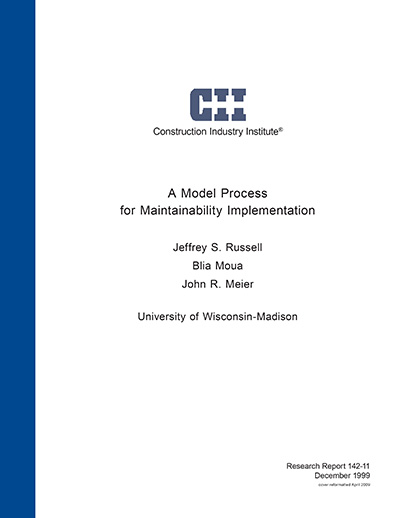
State-of-Practice in Maintainability: Seven Case Studies
Research conducted by the Construction Industry Institute (CII) revealed an increasing awareness and development of maintainability in industry. In fact, some companies have invested considerable time and resources in developing maintainability programs to facilitate a timely integration of maintainability into the project delivery process. This report captures the essence of maintainability programs and provides readers with practical insights into current maintainability implementation.
Research Purpose and Objectives – The primary purpose of this research is to document the current state-of-practice in maintainability. Specific research objectives include: (1) conduct in-depth case studies; (2) capture implemented maintainability best practices; and (3) perform a comparative analysis between maintainability programs.
Research Scope – The CII Maintainability Research Team interviewed industry professionals from a broad cross-section of companies. Case study participants were involved in many different types of industry: general building, manufacturing, chemicals, and pharmaceuticals. Additionally, the case studies document a wide variety of maintainability programs, ranging from formalized corporate-wide maintainability programs to pilot programs implemented at one plant location. The maintainability programs were applied to projects ranging from retrofit projects (less than $500,000) to capital projects (greater than $2 million). Capital and retrofit projects for equipment, systems, and facilities were included in this research.
Furthermore, the case studies present different project participants leading maintainability implementation: owner-led, contractor-led, and designer-led. Additionally, different perspectives of maintainability implementation were sought from project roles of owner, contractor, architect, design engineering, and supplier. But as maintainability most directly impacts owners of constructed projects, the majority of this case study research focused on owner organizations.
Research Methodology – The research methodology adopted is formatted similar to constructability and identical to “A Model Process for Maintainability Implementation” (Russell et al. 1999). The research methodology included: (1) a questionnaire survey; (2) 35 data collection interviews; and (3) seven in-depth case studies with industry professionals. The seven case studies are grouped into two categories: (1) major case studies and (2) minor case studies. The major case studies describe elements of a maintainability program and include a project implementation, if available. The minor case studies describe maintainability best practices implemented on specific projects.
Maintainability Approaches – This report presents seven maintainability approaches: (1) standard design practice; (2) contract specifications; (3) cross-functional project involvement; (4) pilot maintainability program; (5) integration into existing programs; (6) formalized maintainability program; and (7) comprehensive tracking. Description and application of each approach is presented.
Maintainability Program Attributes – This report presents an organized collection of attributes that positively contribute to an effective maintainability program. The attributes are grouped into five areas: (1) corporate commitment; (2) program resources; (3) maintainability planning; (4) maintainability implementation; and (5) program updating. A comparative analysis compares and contrasts attributes for two maintainability programs (owner-led and contractor-led).
Conclusions – Research findings reveal the emergence of maintainability programs. Varying degrees of formality in maintainability programs exist among several industries and project participants. The comparative analysis highlights important program attributes that positively impact maintainability implementation. For example, a structured framework for the maintainability work process enhances consistent and effective implementation. Also, collecting feedback and tracking program progress is paramount for continuous improvement. This research observed maintainability implementation evolving in its infancy stages. Active owner involvement continued corporate commitment and support, and increased project implementations are essential for ensuring successful implementation and improved maintainability in the future.



